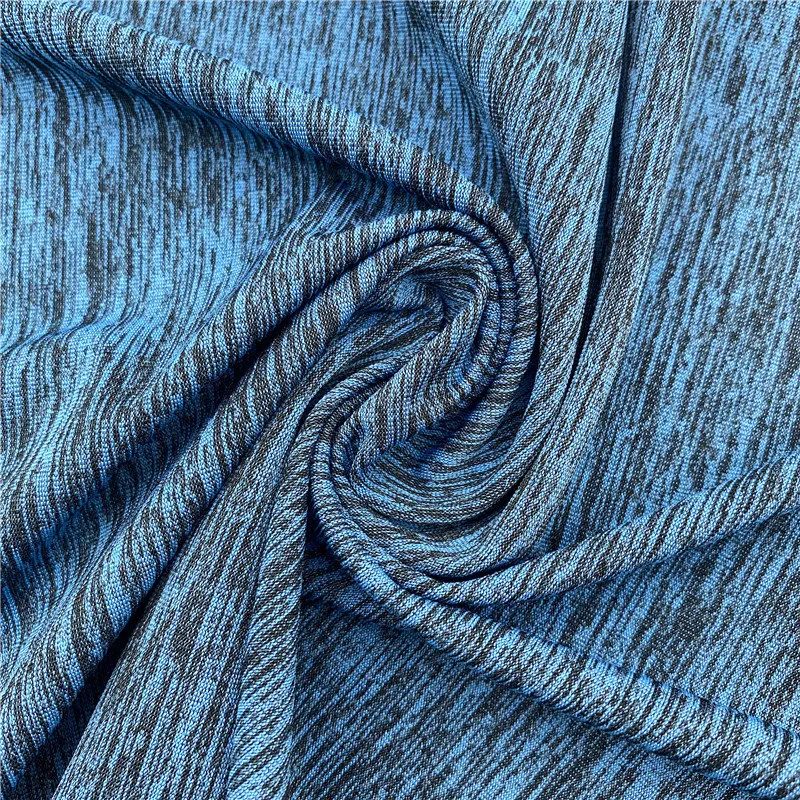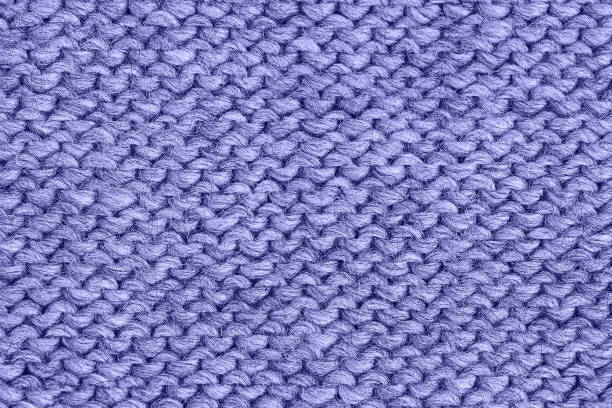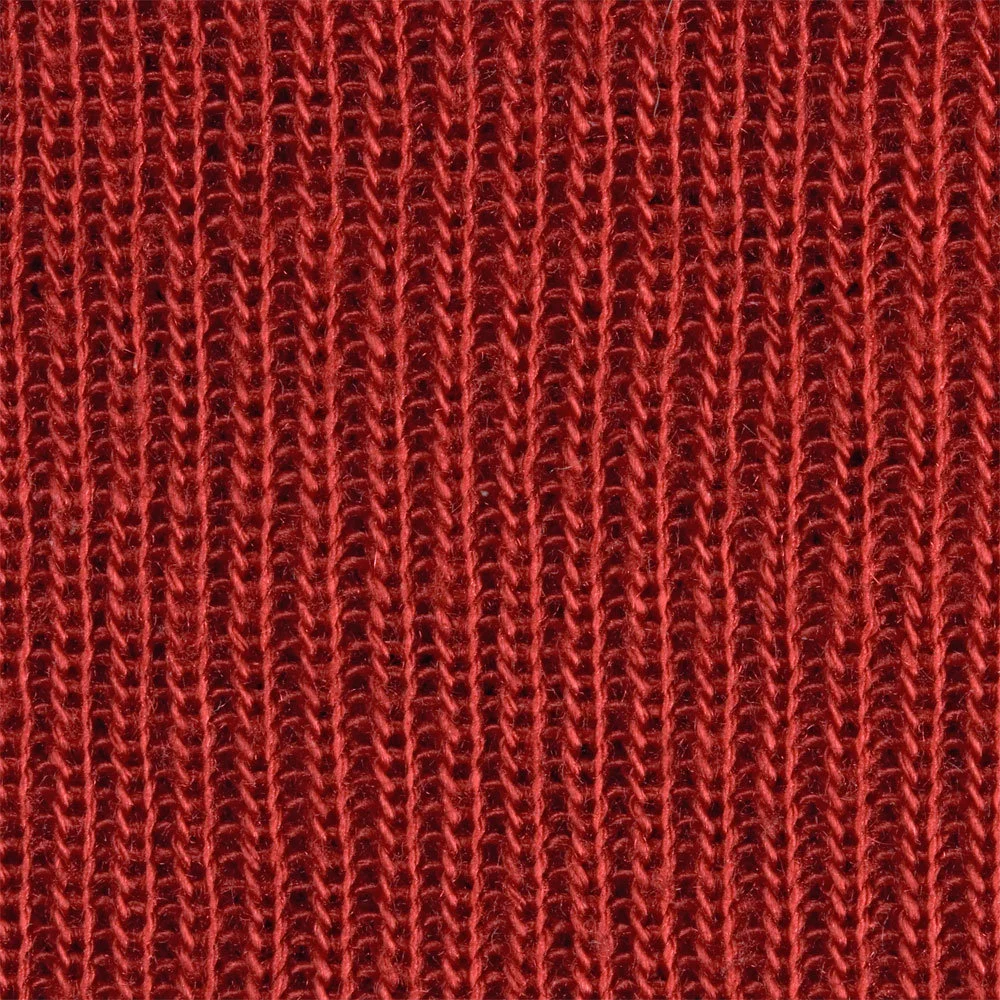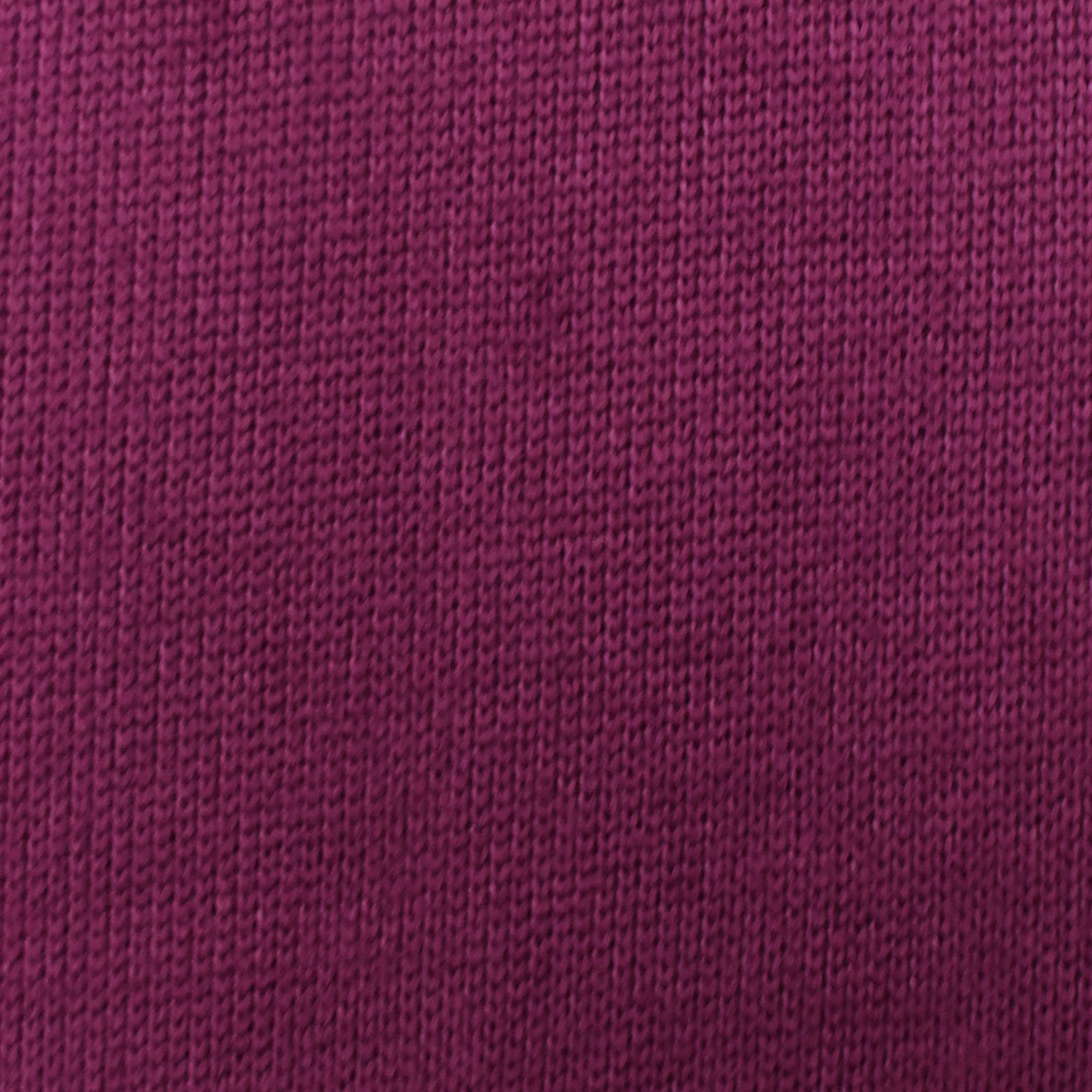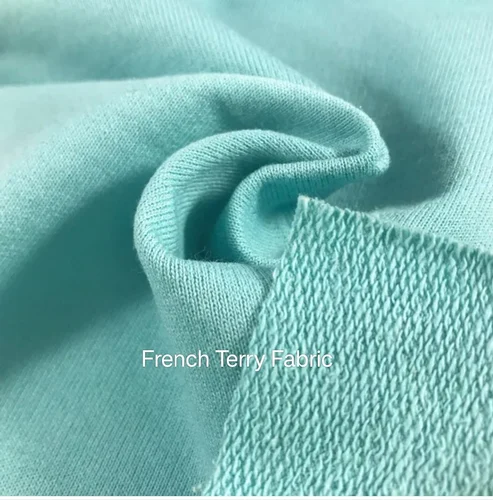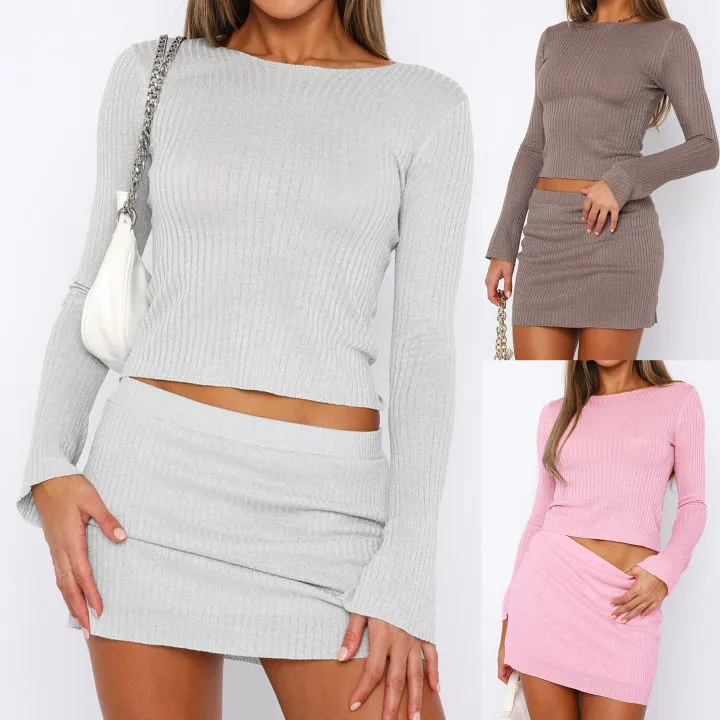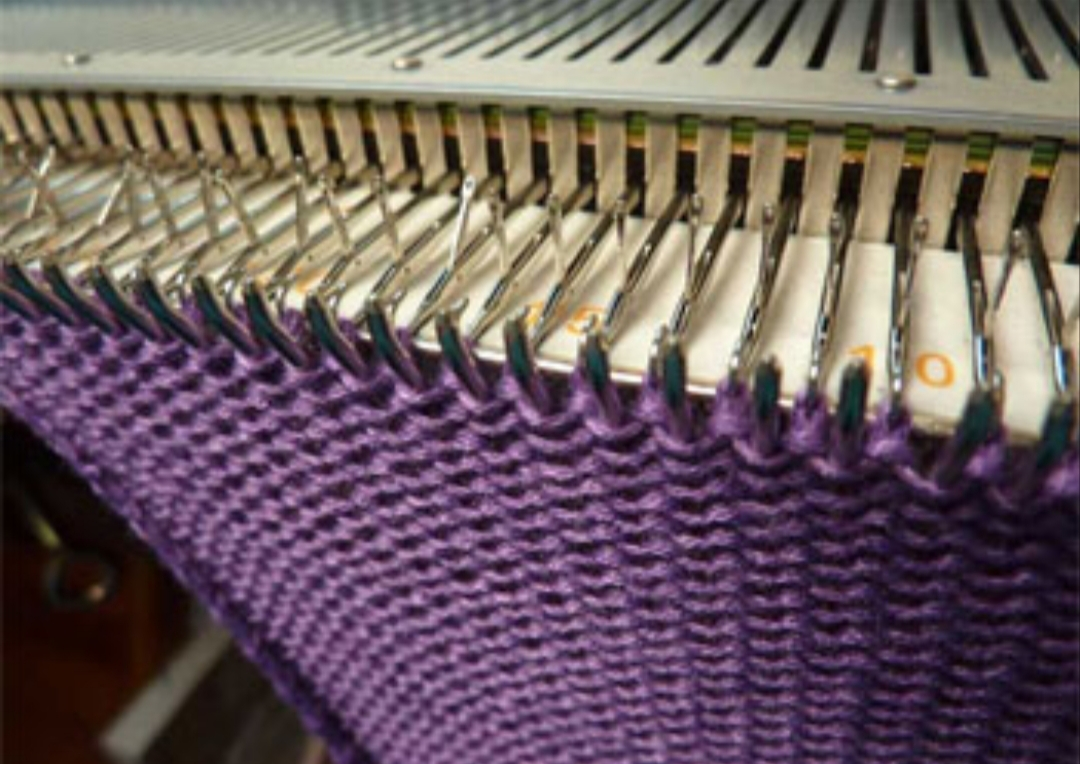People have been covering their bodies with clothes to keep warm and protect their skin from the sun for a very long time. A lot of different ways have been used to make clothes, but knitting is one of the most basic and simplest.
Knitting has existed since the 5th century AD when Egyptian knitted objects were found. What is knitting? How is it done? We’ll find out in today’s article.
Knit Fabric
With its unique twisted structure, knit fabric is a wonder of textiles that makes it stand out from other fabrics. To fully understand knit fabric, let’s look at its basic features and discover what makes it such an interesting material for both fashion and sewing fans.
There is a special way to make knit fabrics. The yarn is linked in a continuous pattern, making loops that give the fabric its stretchiness. This characteristic elasticity is a game-changer, providing unparalleled comfort and flexibility. Imagine a fabric that moves with you and easily molds to the shape of your body. That’s how knit fabric works.
Knit fabrics have a more natural, interwoven structure than woven fabrics, where threads are woven over and under each other in a grid-like design. This makes a fabric that doesn’t fray or wrinkle as easily, so it’s not only comfy but also easy to take care of.
The unique way that yarn loops in knit cloth has many benefits that make it a good choice for many situations. Knit fabric is great for activewear, loungewear, and regular clothes because it is stretchy and lets you move freely. Because it can stretch and recover, knit fabric is also a great choice for clothes that need to keep their shape over time.
Knowing the different kinds of knit fabric is an important part of getting to know it. There are a lot of different knit fabrics, so there’s one that’s great for every project. Jersey knits are light and can be used for T-shirts, while rib knits are more structured and are often used for cuffs and collars.
Knit fabric isn’t just a material; it’s a flexible cloth that lets designers do a huge range of things. They come in different types, and each has its special qualities.
How is Knitting Done?
Knitting is all about using needles to knot or connect a bunch of yarn loops. The loops that were made one after the other are then intertwined into the circle that came before them. The result is a two-dimensional cloth, a lot like weaving.
The threads in woven fabric run straight or parallel to each other, while the yarns in knit fabric wind around and around. Both have their benefits. Because the yarn is looped, the fabric is elastic and stretchy, which makes it great for winter as a wardrobe necessity.
In the old days, you had to knit by hand. But these days, some tools can do the same thing. You can use either flat knitting or circular knitting to make fabric by hand. For flat knitting, you use two straight needles. For circular knitting, you use circular needles or needles with two points. In knitting machines, all follow the same six-step knitting process, even though the tools themselves can look pretty complicated.
Different types of knit fabrics
Knitted fabric can be made by two general types of incorporated fabric methods – Warp Knitting and Weft Knitting. There are different types of knitted fabrics made in each way.
- Jersey Knit Fabric
Jersey is the most common form of knit fabric. A single needle is used to do both knit and purl stitches together to make this fabric. This kind of cloth is also known as the single knit or the plain knit. When it comes to knit fabrics, this one is easy to tell apart because it has a clear right and wrong side.
A lot of people use jersey knit fabric to make simple T-shirts. Additionally, it works great for clothes that flow, like dresses and tops. Jersey knit fabrics are lightweight. They are not so stretchy unless the material has an amount of spandex in it and the edges curl up easily when pulled.
- Purl Knit Fabric
Purl knit fabric is a fabric that is made up of both purl stitches and knit stitches. The process of knitting in which the stitches switch between knitting and purling is called purl knitting. It can be worn either way, as the front and back are the same. The cloth doesn’t lie flat or curl up. That’s why the purl knit is one of the most basic knits: each stitch has a little bump on it.
Both sides of the fabric look the same, and on one side, some purls go all the way along the length of the fabric. The cloth also stretches across and along its length.
- Rib Knit Fabric
Rib-knit, which is also sometimes called ribbing, has rising lines that look like fur. This fabric is made on a double bed knitting machine with two needles that have curved lines going up and down. The vertical ribs on this type of knit cloth also make it easy to spot. Based on the order of the knit and purl stitches, there are two main kinds of rib knit fabric. The sequence of 1 knit and 1 purl stitch makes up the 1×1 rib. The sequence of 2 knit and 2 purl stitches makes up the 2×2 rib knit.
Rib knit fabric is ideal for making turtlenecks, the bottom ends of sweaters, cuffs, and necklines because it is more stretchy crosswise and lies flat on one side. It’s also great for making mats, rugs, and other furniture for the home.
The rib knit fabric is heavier compared to the jersey. It is generally very stretchy among the 3 basic types of knit fabrics, but the 1×1 rib is more stretchy than the 2×2 rib. It has almost identical right and wrong sides of the fabric. However, it is not so smooth unlike jersey knit and the edges don’t curl up when pulled.
- Interlock Knit Fabric
It’s like rib knit, but not the same thing. Some experts say it’s a type of shaping because the fabric is made with two needles. It also looks like two pieces of single-knit clothing stacked on top of each other. Because of this, this kind of knit fabric is also known as “double-faced rib.”
This is the best kind of knit fabric to use when you want to sew pants, skirts, and tanks. It is heavier and thicker than a jersey but not too stretchy compared to a jersey. However, among the 3 basic types of knit fabrics, interlock is more stable. And most importantly, it is a reversible type of fabric, there’s no right or wrong side of the fabric.
- French Terry Knit Fabric
When you knit terry cloth fabric, you get French Terry fabric. One side has loops and soft piles of yarn, which are generally used for the inside of a garment. The other side is smooth and soft. This makes a material that is light, absorbent, and good at wicking away sweat. It’s also very comfortable to wear any time of the year.
There are so many knit styles that we won’t be able to mention, they can have spandex added, and that changes the fabric behavior and uses.
Characteristics of Knit Fabric
The first and maybe most noticeable thing about knit fabric is how well it stretches and recovers. Because the loops in knit materials are interlocked, they can stretch in all directions, making the fit comfortable and forgiving. This ability to stretch is especially helpful for clothes that need to be flexible, like athletic wear, underwear, and tight clothes. Also, the fabric’s high recovery means that it goes back to its original shape after being stretched, so the shape of the clothing stays the same over time.
Along with being able to stretch, knit materials often have great drapes. Knit fabrics are soft and stretchy, so they can easily mold to the body, making silhouettes that look good on everyone. This quality is especially desirable for clothes like dresses, skirts, and flowy tops, where a nice stretch makes the whole look better.
Knit fabric is also good at letting air pass through it. Because the open-loop structure lets air flow, knit clothes are easy to wear in a range of climates. This ability to let air pass through is good for activewear, sleepwear, and casual wear because it keeps the wearer cool and comfy even after long periods of use.
Additionally, knit materials come in different weights, from jersey knit, which is light, to French terry, which is heavier. Because there are so many options, fabric designers can choose fabrics that are perfect for their projects. There is a knit fabric that will work for you whether you want to make a warm sweater or a light summer dress.
Knit fabric is versatile because it can be used for both clothing and different sewing methods. Knit fabrics may look hard for newbies, but they are very forgiving and can be more forgiving of mistakes than woven fabrics. Because it is so flexible, knit fabric is a great choice for people who are just starting to sew.
Working with Knit Fabric
When working with knit fabric, the needles and thread you choose are the most important things. Knit fabrics need to be handled with more care than woven fabrics, which can handle sharp needles. Choose ballpoint needles, which are made to work with knit materials. Instead of cutting the yarns, these needles slide between them. This keeps the fabric from getting snagged and possibly getting damaged.
Choosing the right thread is just as important. If the fabric is stretchy, it’s usually best to choose a thread that is also stretchy. Polyester threads or polyester threads wrapped in cotton are great for making knit fabrics because they are strong and flexible.
When you stitch, it’s very important to use the right stitch type. Plain straight stitches might be too stiff for knit fabrics, and when the fabric moves, the seams might pop open. Instead, you might want to use a zigzag or stretch stitch on your sewing machine. Because the fabric is stretchy, these stitches make sure that the seams stay together even when the clothing moves.
Also, if you want results that look professional, you need to play around with your machine’s tension settings. Test your stitches on a bit of knit fabric until they are tight enough but not too loose. By changing the tension, you can keep the fabric from puckering or pulling in an uneven way while you sew.
A walking foot can make a big difference for people who use regular sewing machines. This add-on helps the fabric move smoothly through the machine, stopping any odd stitching and making sure the finish is smooth. It’s possible for your machine to not have a walking foot. To make the fabric move more easily, you can put tissue paper or wash-away support on top of it.
When cutting out pattern pieces, using weights instead of pins can keep the fabric from being stretched too much. Place the design on top of the fabric, use weights to keep it in place, and then carefully cut. This method reduces distortion and makes sure that the final clothing keeps its shape.
If you found this article helpful, don’t forget to give it a thumbs up, subscribe to our channel for more content, and share it with fellow fabric enthusiasts. Until next time, happy crafting!
You can also get more knit fabric knowledge from this website: https://www.testextextile.com/blog/


